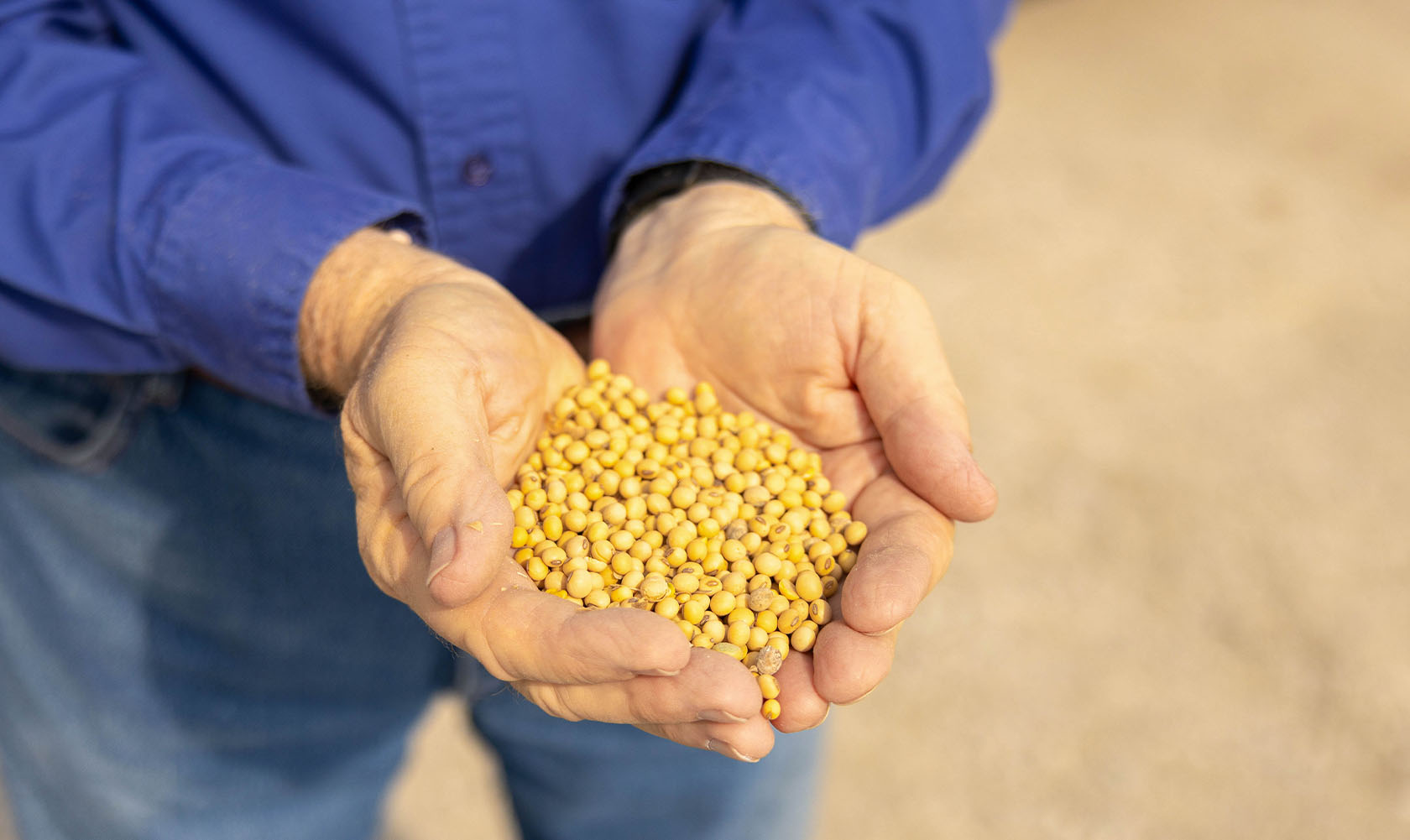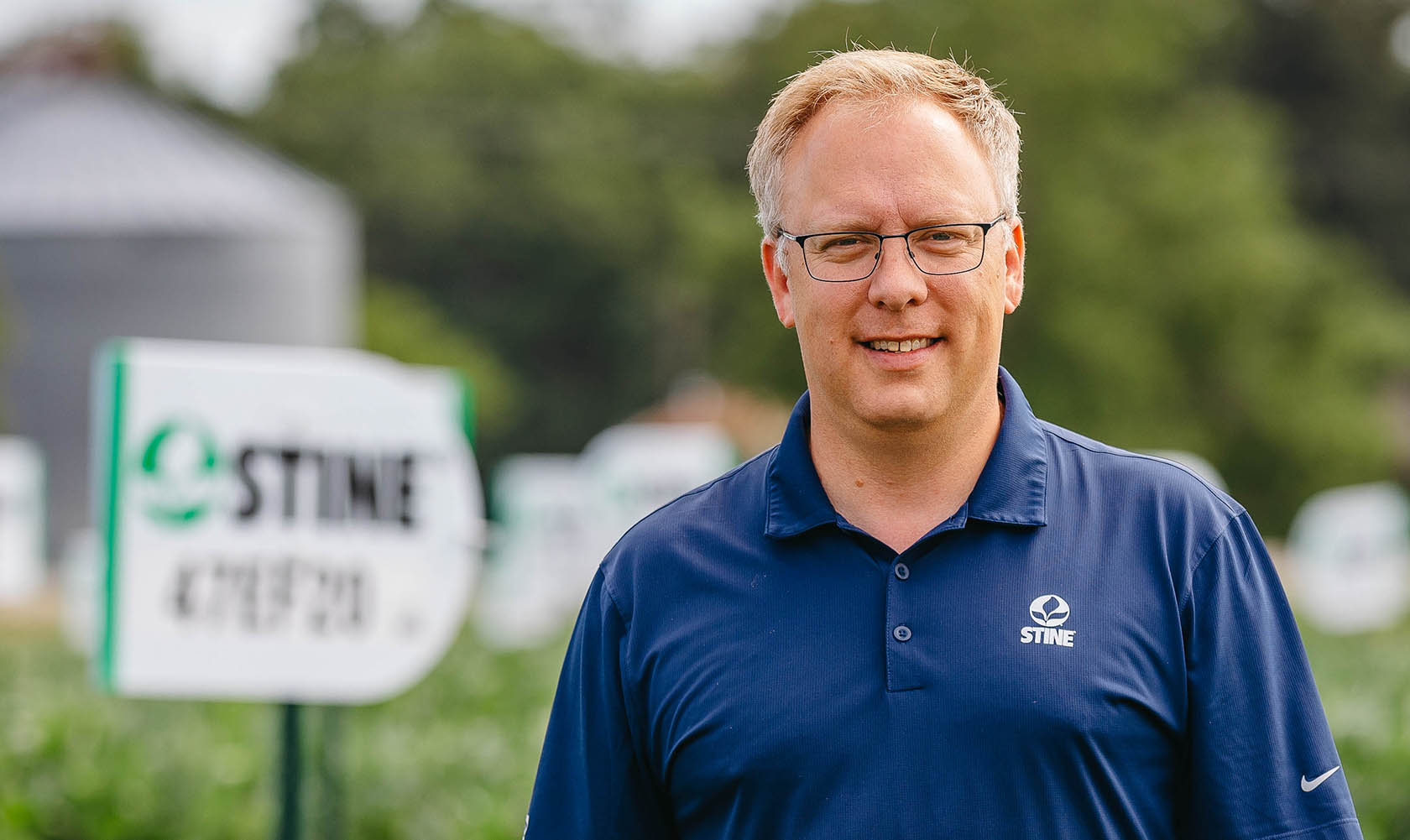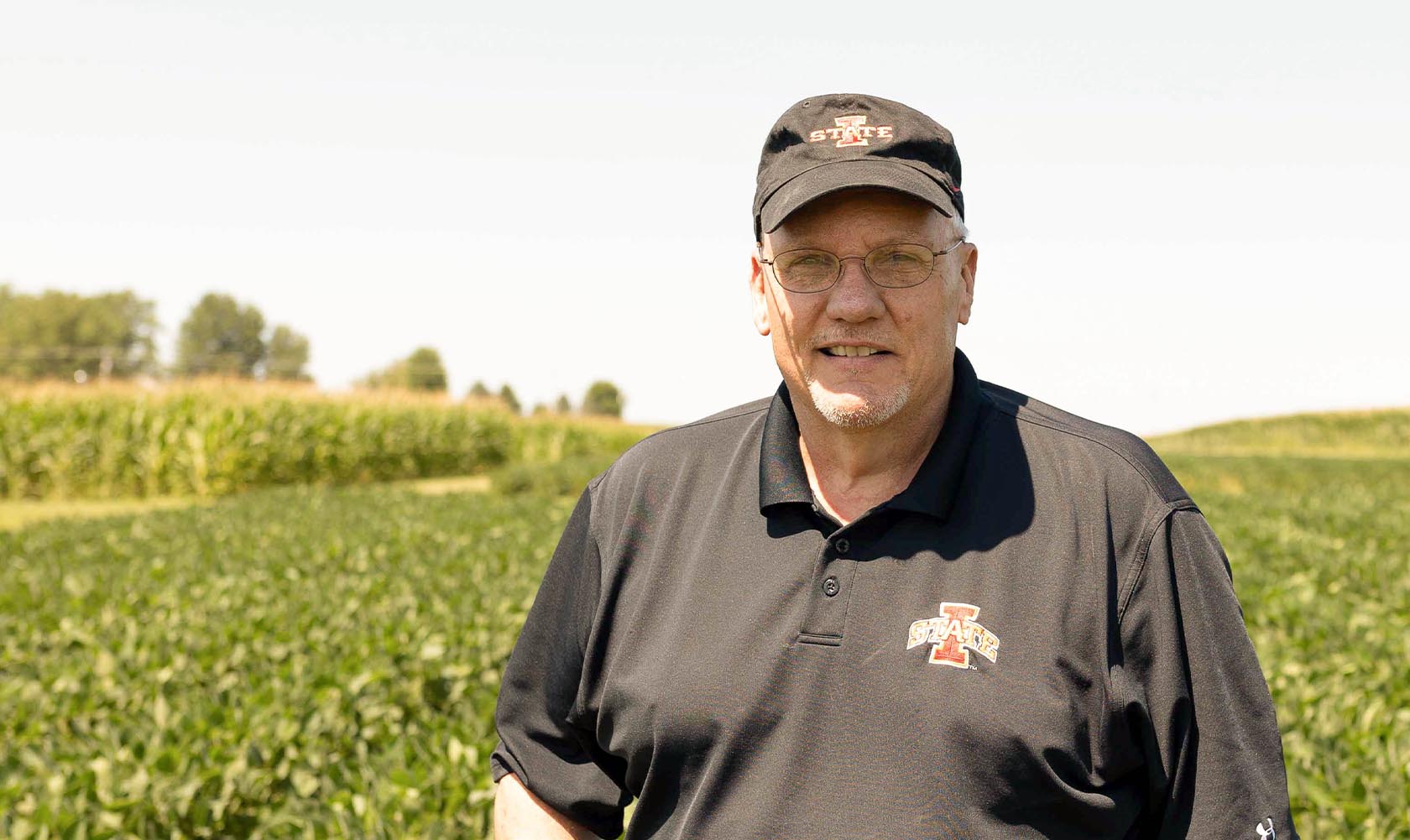
(Photo: Iowa Soybean Association / Joclyn Kuboushek)
Shaping the future of seed
July 31, 2025 | Kriss Nelson
As planting dates move earlier and the growing season stretches longer, soybean breeding is shifting, too. Researchers are working to develop varieties that can better handle drought, stand up to disease and nematodes, and take advantage of longer maturities that often come with higher yield potential.
Research drives development
The development of a new soybean variety involves multiple steps, starting with thorough research conducted within universities and seed companies.
At Iowa State University (ISU), soybean checkoff funding is helping researchers examine ways to enhance future soybean varieties.
"Checkoff dollars are woven into the university trials and research," says Mark Licht, ISU assistant professor and Extension cropping systems specialist. "Farmers' checkoff contributions are being used to help fund research in disease tolerance and increasing yield potential through breeding, grain yield potential, disease susceptibility from planting longer maturity varieties earlier, and evaluating new soybean cyst nematode (SCN)-resistant varieties."
Expanding breeding scope
Stine Seed Company focuses its research efforts on extending the utility of its conventional breeding program.
"After 60 years of breeding efforts, our conventional breeding program remains a powerhouse," says David Thompson, national marketing and sales director for Stine Seed Company. "Not because it's conventional, but because it's our longest-running program and consistently delivers our highest-yielding material."

He often compares Stine Seed Company's breeding program to a steam engine train.
"Once it builds momentum, you don't want to stop it," he says. "That momentum powers our pipeline and enables us to keep delivering better genetics year after year."
Looking toward the future, Thompson believes Stine Seed Company will continue to build steam, focusing research on extending the utility of their products.
"With the trend toward earlier planting dates, top priorities will require traits like cold tolerance, stronger emergence and overall hardiness," he says.
Improvements in defensive traits against insects and diseases will also continue, helping farmers battle long-standing challenges like SCN and iron deficiency chlorosis.
"Although seed treatments are showing potential in these areas, we need new tools to help growers with that battle," Thompson says.
Although market demand fluctuates, Stine Seed Company prioritizes the development of better oil and protein varieties.
"When bringing those higher oil and protein products to market, our goal is to enhance those traits without sacrificing yield, oil or protein content," says Thompson.
Years-long process
While tools and traits have changed, the fundamentals of running a successful breeding program have not, Thompson says. "It still comes down to three things: speed, efficiency and volume," he says.
Soybean varieties take years to develop through research, testing and selection. On average, it takes about six years to move from an initial cross to a variety that's ready to go into a farmer's seed bag.
Thompson says it starts with 1.2 million soybean research plots each year, allowing Stine Seed Company to generate and evaluate countless of combinations to select the best-performing varieties.
"The highest-performing genetic material that comes out of our breeding programs is at the core of everything we do," he says. "We apply that elite material across all of our efforts in soybean breeding."
Farmers benefit from collaboration
BASF's June 2024 announcement introduced Nemasphere, a new SCN-resistant trait. The product, planned for commercial launch in the 2028 growing season, has connections to ISU.

Greg Tylka, Morrill Professor in the Department of Plant Pathology and Microbiology at ISU and co-director of the Iowa Soybean Research Center, says Nemasphere — the first and only biotechnology trait for SCN — was evaluated at several locations across Iowa beginning in 2015. The research, conducted in collaboration with BASF and ISU, contributed data that was included in a scientific paper published by a BASF researcher in 2023.
Looking ahead
Preparing seed for the future is also about preparing for the unknown.
That's the approach at Beck's, where researchers are combining traditional breeding with data-driven product testing and partnerships with outside tech developers to deliver more adaptable, resilient seed.
Tom Koch, Ph.D., computational genomics manager at Beck's, says the work is twofold.
The team focuses on improving genetics, but that's only part of the challenge. The tougher question, Koch says, is trying to predict the environment those genetics will face.
"We don't know what the weather will be like in one, three or five years from now; wet, dry, extreme," he says. "So we're working to make sure we have robust products that can perform in an environment we haven't seen yet."
To do that, Beck's is moving beyond yield trials. Koch says they're layering in climatic and environmental data, examining how soil, weather, and management practices impact crop performance. That's where plant characterization comes into play.
Last year, the company launched a new group focused on product characterization research. The goal is to better understand how hybrids respond to different agronomic practices, such as nitrogen management, population density, and root development, before those products reach farmers.
"In the past, we'd release a new hybrid and then learn with the farmer how to grow it," Koch says. "Now, we want to bring that seed to the farmer with management advice already in hand."
That information allows advisors to recommend not just what to plant, but how to manage it for better results.
Partnering with innovators
While Beck's is building this capacity internally, they're also staying connected to outside innovation. This includes partnerships with startup companies, universities and USDA research labs that are working on agricultural technologies, from genetics to automation.
"There are a lot of smart people out there doing good work," Koch says. "We don't claim to have all the answers. And we're not trying to build everything ourselves; it's too risky. But if a tool works within our system, we want to support it."
That mix of in-house data and outside ideas helps Beck's prepare for what Koch calls "a known plan in an unknown environment."
"At the end of the day, we're trying to help farmers succeed no matter what the year throws at them."
Written by Kriss Nelson.
Back